This is the fourth in a series of posts about the Fujifilm GFX 100S. If you look on the right side of this page, scroll down to the Categories section, and select GFX 100S from the dropdown list, you can see all the reviews.
I made a series of dark-field images with the GFX 100S at various ISO settings, shutter modes (ES and EFCS), and raw precision. I analyzed the images, calculated the read noise, and I’ll show you the results. If you want to compare the results with the GFX 100, here they are.
These curves show the engineering dynamic range (EDR), which I’m defining here as full scale divided by the root-mean-square (rms) value of the read noise, using lossless compression. Shutter speed was 1/1000 second. All these tests were done with no lens. I used a body cap to get the dark field. The curves are all done using 600×600 pixel crops that have been shifted leftward just far enough to avoid the center column of the sensor, which is sometimes the site of aberrant behavior.
With EFCS and 14-bit precision, we can see the conversion change as the camera goes from ISO 400 to ISO 500. This is the same as the GFX 100. The curves are likewise similar. There seems to be digital noise reduction at the highest ISOs.
There is a tiny bit more EDR with 16-bit precision.
With electronic shutter, the curves look similar.
Now we’ll look at input-referred read noise, and do some comparative plots.
The 16-bit precision makes about a quarter-stop improvement at base ISO with EFCS. The camera is essentially ISOless above ISO 500 until the extended ISO range starts.
The same is true with electronic shutter.
The difference between ES and EFCS in 14-bit precision is minimal.
The same is true in 16-bit precision.
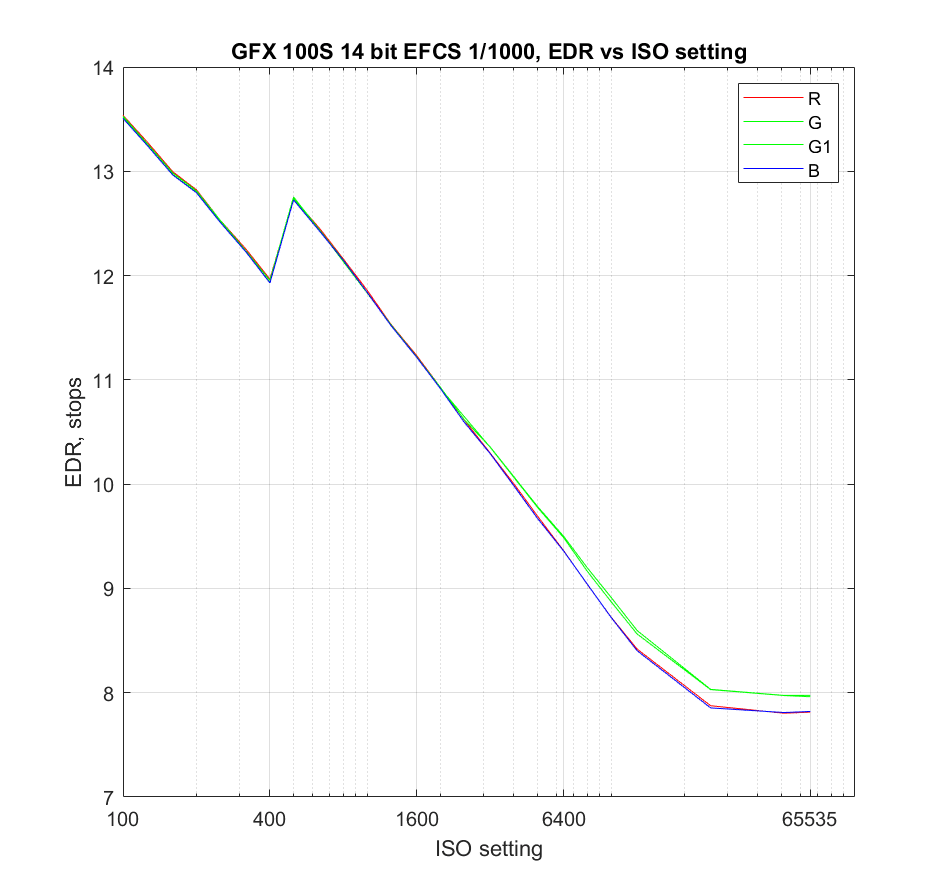
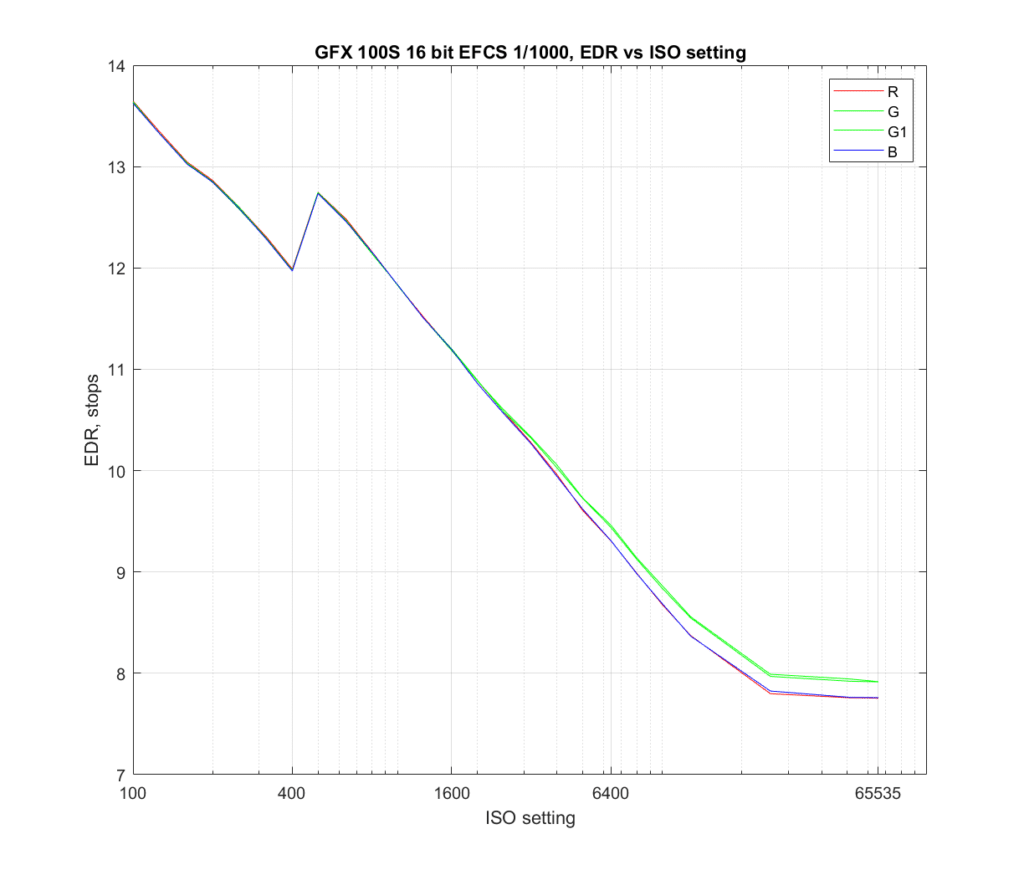
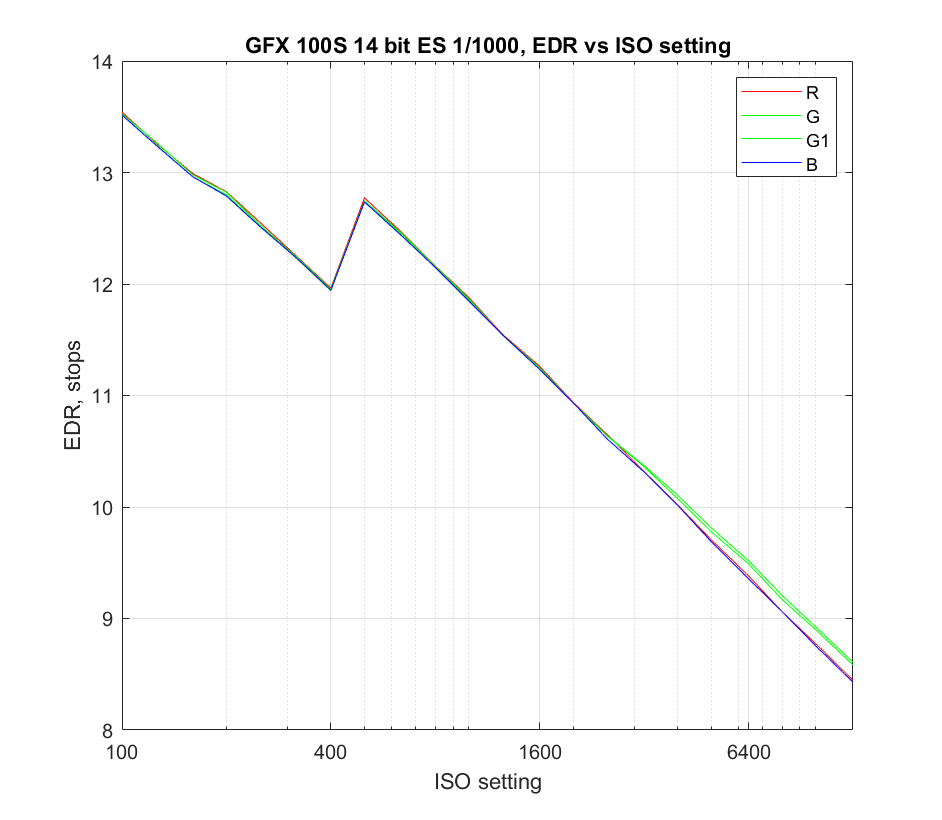
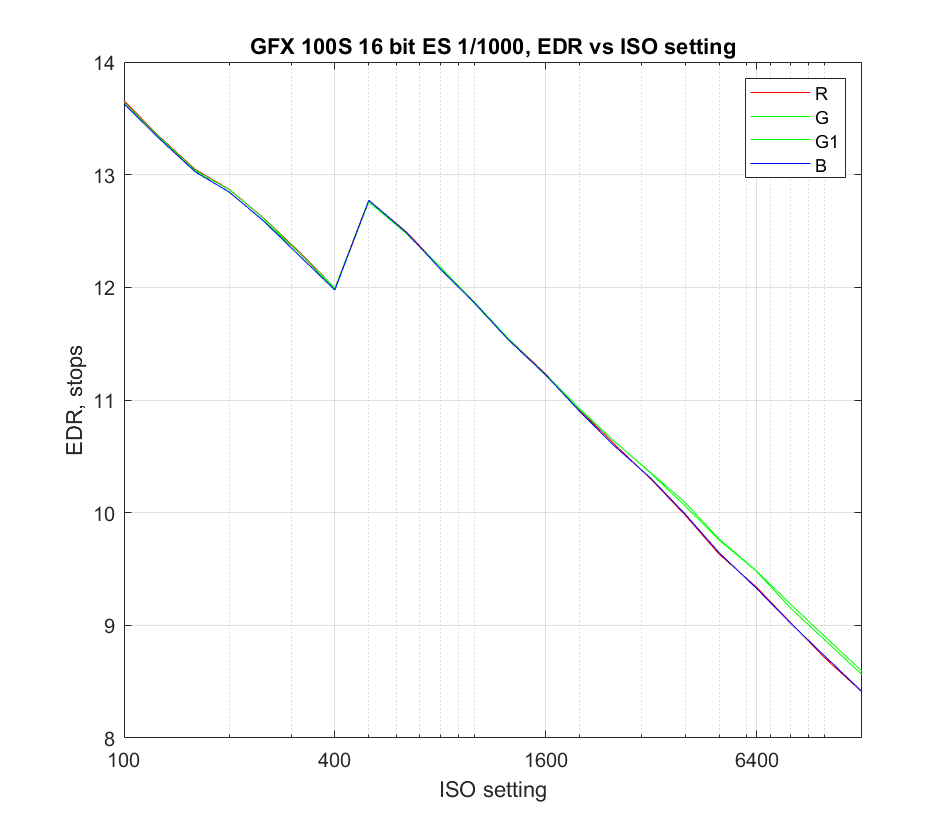
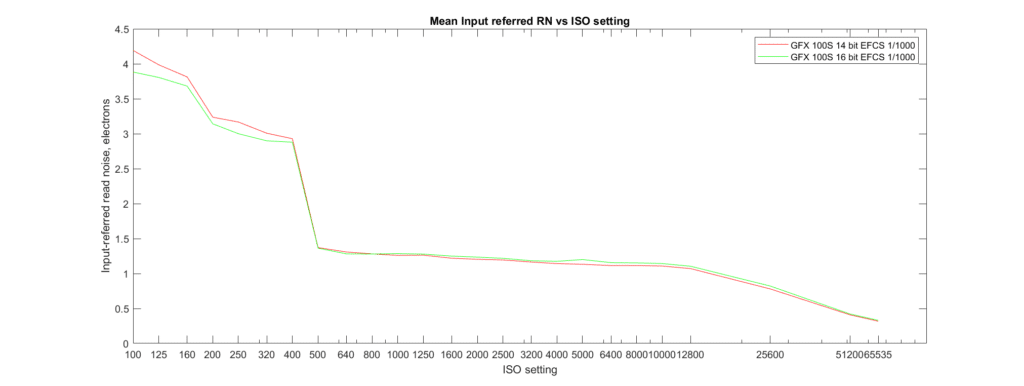
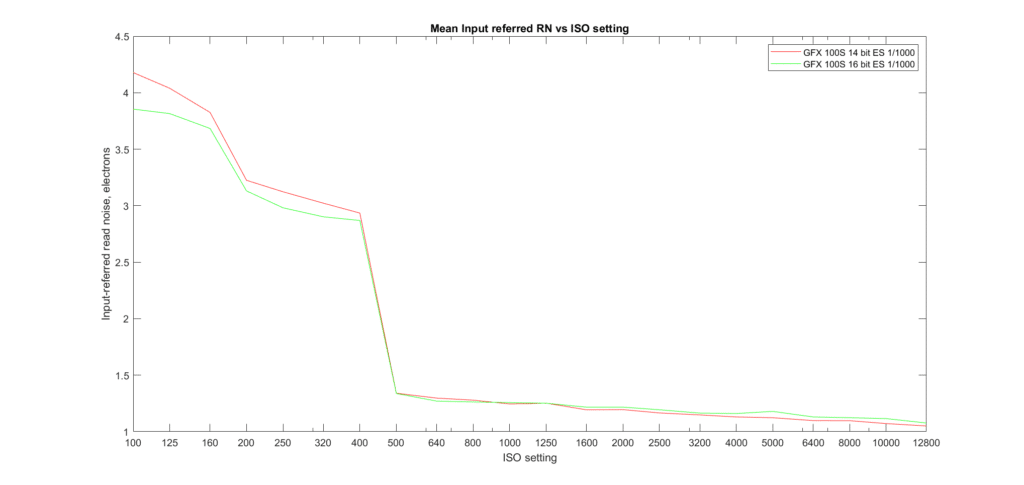
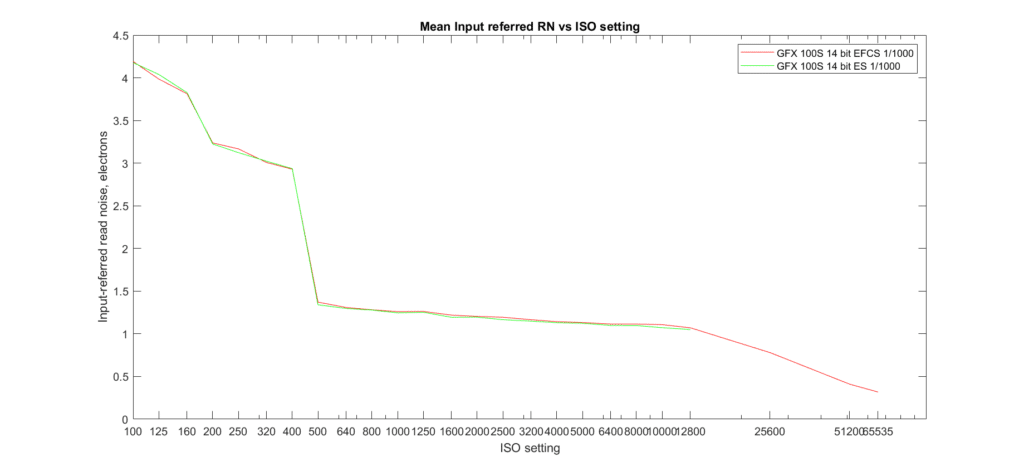
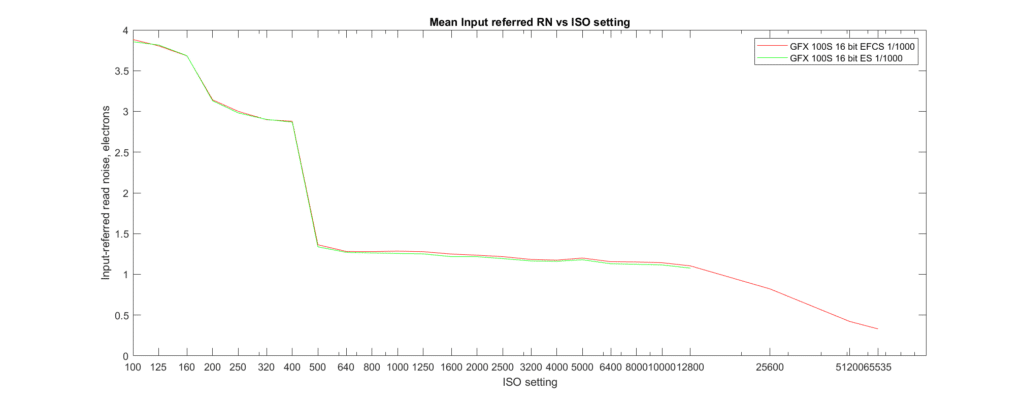
Leave a Reply